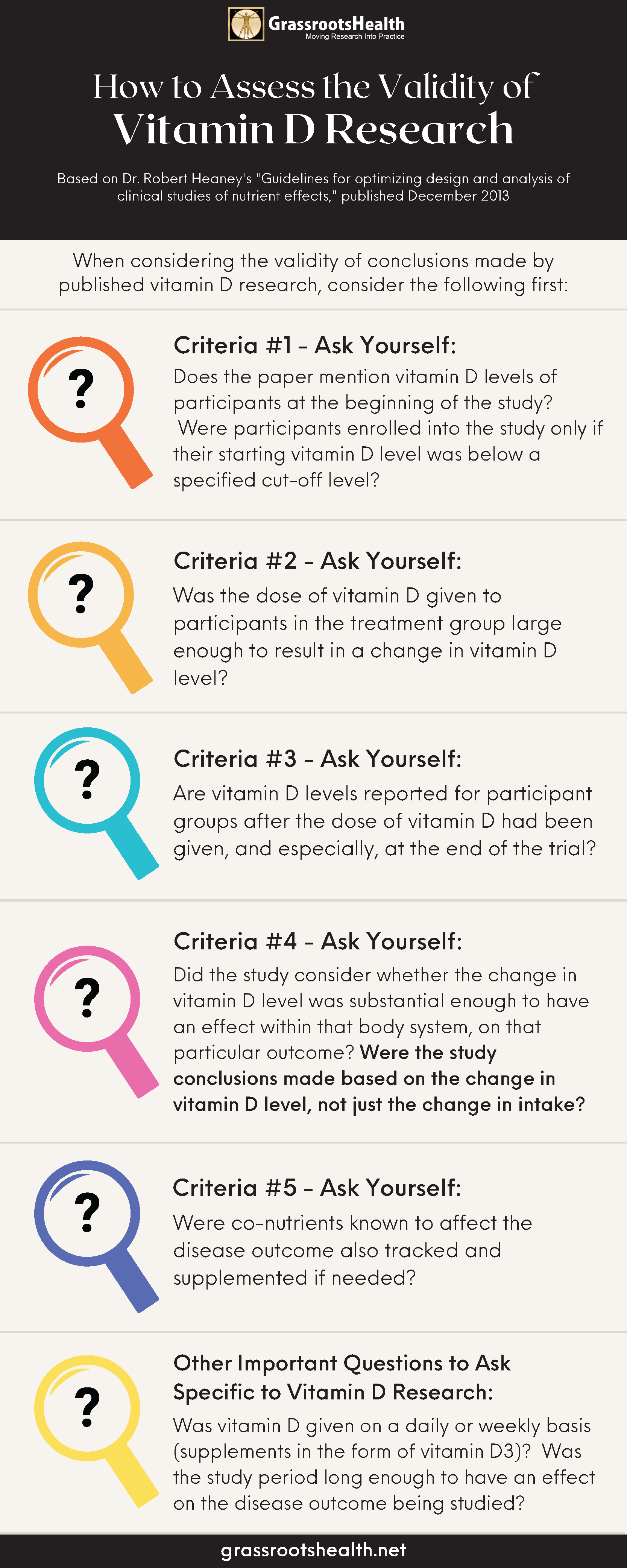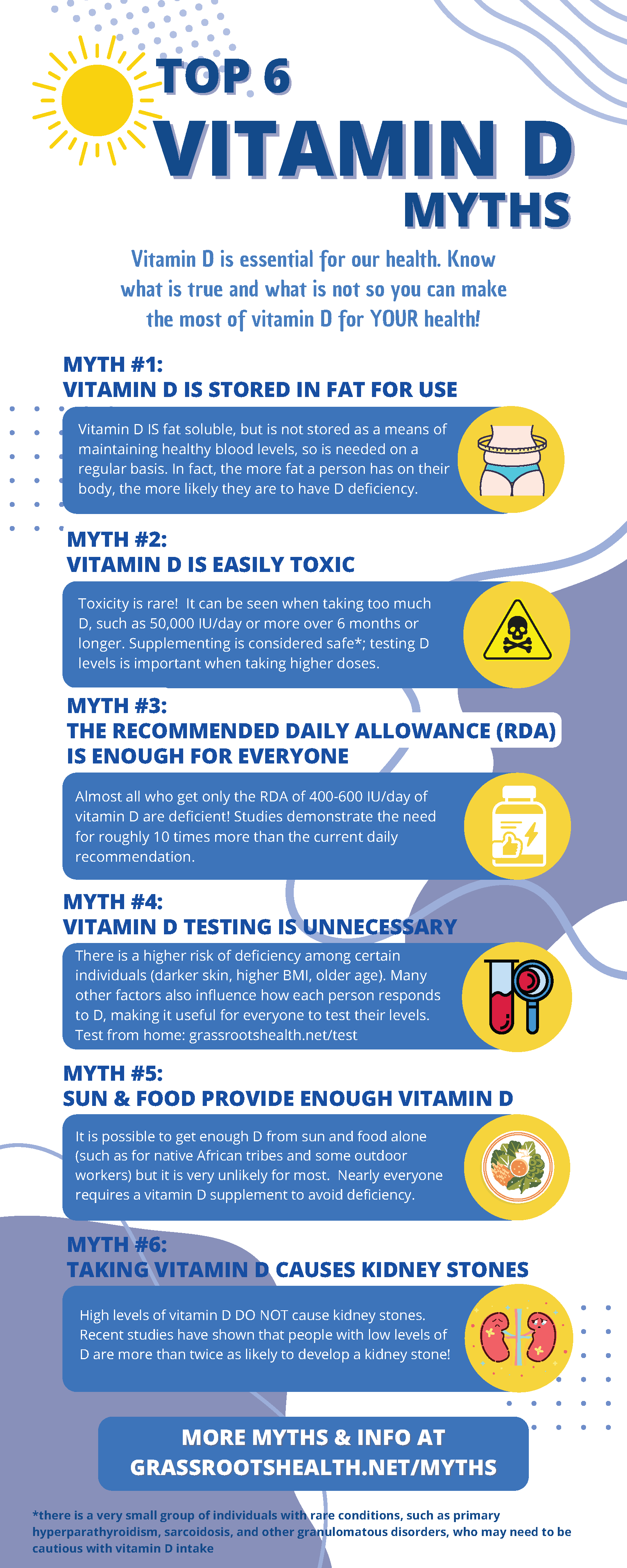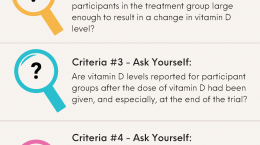Published on December 26, 2022
Help fight vitamin D misinformation and the harm that can result from articles such as the recent Forbes piece “No, You Still Don’t Need Vitamin D Supplements!”
 Several participants have emailed us since Forbes released their article titled “No, You Still Don’t Need Vitamin D Supplements!” Most participants were curious to know how we would respond to such a vitamin D ‘hit’ piece.
Several participants have emailed us since Forbes released their article titled “No, You Still Don’t Need Vitamin D Supplements!” Most participants were curious to know how we would respond to such a vitamin D ‘hit’ piece.
What GrassrootsHealth would like to know is, how will YOU respond to such vitamin D ‘hit’ pieces?
What YOU Can Share in Response to False Vitamin D Claims
The Forbes article stated the following as apparent facts about vitamin D – below each of these statements we provide links to material that can be referred to or shared to help demonstrate that these claims are, in fact, false. Each link and resource references published, scientific research. Use these resources and links to help fight vitamin D misinformation, whether it’s on social media, via email, or in discussion with a friend or colleague.
You can get enough vitamin D from food, therefore, you don’t need to take supplements.
Can you get enough vitamin D from food alone? According to GrassrootsHealth data, approximately 22% of participants report that they do not take any vitamin D supplements. Using this data, we created a chart of the average vitamin D level for participants who do not use a vitamin D supplement by month to demonstrate that there is not a time during the year that these participants reach an average level of 40 ng/ml as recommended by our Scientists’ Panel. Read the blog and view the chart here.
What do you need to eat on a daily basis to get enough vitamin D from food? In the past we featured a profile of a D*action participant who has shown that it is possible to get enough vitamin D to maintain good health from food alone, however, you will see that she does not have a typical western diet. Check out her story here.
Taking vitamin D is useless for bone health or preventing fractures.
A recent 3 part blog addresses the findings from the VITAL trial on fractures and where that particular study failed for properly assessing the relationship between vitamin D supplementation and fracture risk. Unfortunately, this study is now often referred to by those who argue that vitamin D is therefore unnecessary for bone health and fracture prevention. Did the VITAL analysis meet the nutrient study criteria for fracture rates, and how reliable are their conclusions? Read Part 1, Part 2, and Part 3
Share this study showing that individuals with vitamin D levels at or above 30 ng/ml (75 nmol/L) had a 39% lower risk of hip fracture (P=0.02) and a 30% lower risk of fracture-related hospitalization (P=0.007) compared to those with levels less than 20 ng/ml (50 nmol/L).
Share this blog that describes the multiple ways vitamin D works to benefit the bones and musculoskeletal system.
Vitamin D supplementation does not affect heart disease, mood disorders, metabolic disorders, and others.
Heart Health: Vitamin D has been demonstrated to have many benefits for heart and cardiovascular health. Here is a review of these benefits for cardiovascular and heart health to share. In fact, a new, large-scale observational study, which included data from 37,079 people in the UK with existing cardiovascular disease (CVD), ages 40-69 years, found that death from all causes (including heart disease, and especially cancer) was significantly associated with vitamin D level. They found that every 4 ng/ml (10 nmol/L) increase in vitamin D level was associated with a 12% reduction in risk for all-cause mortality and a 9% reduced risk for CVD mortality. Share the study here.
Mood Disorders: Vitamin D plays an essential role in the health of the brain and nervous system, and has been shown to have beneficial effects on depression, stress, anxiety and sleep. One study clearly demonstrated improved self-perceived measurements of mental and emotional wellness among those with higher vitamin D levels. Share the study here.
Metabolic Disorders: Vitamin D supplementation has been found to reduce insulin resistance by 15% and reduce the risk of type 2 diabetes by 40-60% with achieved vitamin D blood levels of 40-60 ng/ml (100-150 nmol/L). This blog provides an in depth explanation of the roles of vitamin D in this respect, and how vitamin D does indeed affect metabolism and metabolic disorders, such as Type 2 Diabetes. Read more and share here.
Vitamin D testing is unnecessary and a waste of healthcare dollars
Addressing Vitamin D Deficiency Can Save Healthcare Costs, and Lives – Read More
Vitamin D testing is absolutely necessary, for many reasons, as described in this blog.
In fact, implementing vitamin D screening programs has been shown to reduce healthcare dollars and improve patient outcomes, as demonstrated by this German study.
A very impressive study looked at data from 6 different Southeastern VA Medical Centers where vitamin D testing had been in place from October 2004 to December 2008. It included 400,000 patients of which 15,340 had vitamin D tests within their records. For those patients with vitamin D test results, roughly 30-50% were vitamin D deficient on their initial test. The VA center with the lowest percentage of vitamin D deficiency also had more than 50% lower inpatient costs than the three centers with the highest rates of vitamin D deficiency. Also, patients who received one or more follow-up tests (which gives the patient data required to maintain their optimal vitamin D level) had 50% lower inpatient laboratory and pharmacy costs, as compared to those that only received one test. Read more about these findings and share here!
Share Vitamin D Research Easily with Our Infographics
When considering the results of published nutrient research, it can often be difficult to determine what results come from a good, well-designed study, and what results may not be as reliable due to poor study design. We created the following infographic, using Dr. Heaney’s nutrient study criteria, to help individuals determine for themselves what amount of validity the study conclusions hold. While there is a bit more to consider along with these criteria specific to vitamin D research, the infographic below is a good general guide and reminder of what to look for.
How to Assess the Validity of Vitamin D Research Infographic
Download and Share this Infographic
Another infographic to share when vitamin D misinformation, or myths, are involved, is our Top Vitamin D Myths: What’s Fact and What’s Not? Page and Infographic.
Download and Share this Infographic
How are Your Levels of Vitamin D and Other Important Nutrients?
 Having and maintaining healthy omega-3 and vitamin D levels can help improve your health now and for your future. Choose which markers to measure along with vitamin D, such as your omega-3s and essential minerals including magnesium and zinc, by creating your custom home test kit today. Take steps to improve the status of each of these measurements to benefit your overall health. You can also track your own intakes, symptoms and results to see what works best for YOU.
Having and maintaining healthy omega-3 and vitamin D levels can help improve your health now and for your future. Choose which markers to measure along with vitamin D, such as your omega-3s and essential minerals including magnesium and zinc, by creating your custom home test kit today. Take steps to improve the status of each of these measurements to benefit your overall health. You can also track your own intakes, symptoms and results to see what works best for YOU.
Enroll and test your levels today, learn what steps to take to improve your status of vitamin D (see below) and other nutrients and blood markers, and take action! By enrolling in the GrassrootsHealth projects, you are not only contributing valuable information to everyone, you are also gaining knowledge about how you could improve your own health through measuring and tracking your nutrient status, and educating yourself on how to improve it.







